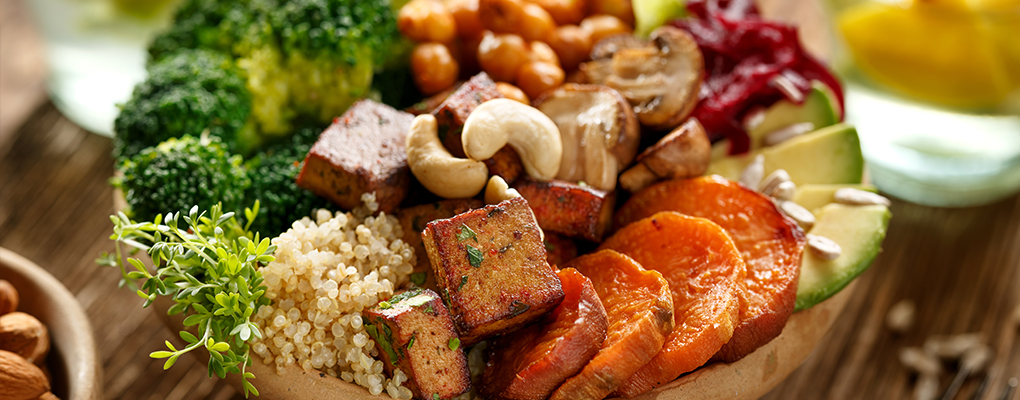
I’m a little tired of people using the term ‘plant-based’ to mean ‘plant-only’. It’s not correct. We don’t have to abandon meat and dairy completely. I eat a plant-based diet - lots of vegetables and salads as well as legumes, fruits, nuts, seeds, and whole grains. However, I do still eat small amounts of meat, fish and chicken, and it’s healthy.
What nutritionists actually want when they speak of a ‘plant-based’ diet is for people to increase the quantity of vegetables, legumes, grains, nuts and seeds they eat – foods that are derived from plants - and in turn reduce the quantity of animal-based foods such as meat, fish, eggs or milk. Better for the planet, better for our health.
The growing popularity of events like Meat-Free Monday and the number of meatless meals springing up everywhere, mean that the term ‘plant-based’ has changed its meaning for many people. I was spurred to write this post after reading a similar column from the Editor of the Healthy Food Guide magazine in New Zealand. In it, she writes:
“Plant-based does not have to mean meat-free. A plant-based diet can include, if you like it, meat, fish, chicken or dairy.”
“You don’t have to be a vegetarian or vegan to reap the benefits of plants. Instead of basing the dish on the protein (meat) component, try basing it on the plant (vege) component. Think of meat as a garnish, an addition to the main event.”
Research shows that a plant-based diet can help reduce our risk of developing chronic conditions like diabetes, obesity and heart disease. Plus it seems that weighing less is easier if you’re eating more veggies – all that fibre, all that chewing from whole foods. It adds up.
Plant-based is not the same as a vegan diet. Plant-based simply means more plants and less meat – it’s fairly flexible, but still includes dairy for one person, while someone else might include a few meat products but still the focus of the majority of meals is on plants.
Veganism is a way of life more than a diet. And vegans not only eat a diet which excludes all animal products they don’t use animal products such as fur and leather for clothing. A vegan diet is much stricter than a vegetarian diet or a plant-based diet and leaves little room for interpretation. It also can lead to nutrient deficiencies such as a shortage of B 12, long-chain omega-3s, haem iron, zinc and calcium. It takes more planning and thought to ensure you get these key nutrients, especially if you’re feeding kids.
Just because something is labelled ‘plant-based' doesn’t mean it’s healthier (a bit like gluten-free or organic). There is plenty of unhealthy junk food that can be called ‘plant-based’ such as lollies, chocolate, muffins, bars and shakes.
Don’t be taken in by the claims from packs of noodles or salad bowls – these always WERE plant-based. Now they’re just proclaiming it as a marketing ploy.
Buy only 350-400g raw weight of red meat for 4 people (I used to buy 500g). This yields 90-100g per person which is defined as one healthy serve by the official Australian Guide to Healthy Eating. With water loss, this cooks down to much less.
Plant-based means exactly what it says. The basis, or majority, of your diet comes from plants, the other foodstuffs like meat, chicken, fish, and dairy are a minor part of the whole diet.
It’s a healthy way to eat as it delivers a variety of nutrients, more fibre and more health-giving phytochemicals while still providing adequate protein.
Written by guest contributor, dietitian-nutritionist Catherine Saxelby, and reproduced here with permission from www.foodwatch.com.au.
Tap to call us at 1800 567 348
Fill in your details below and our team will be in contact shortly to answer your questions and get you started.
"*" indicates required fields